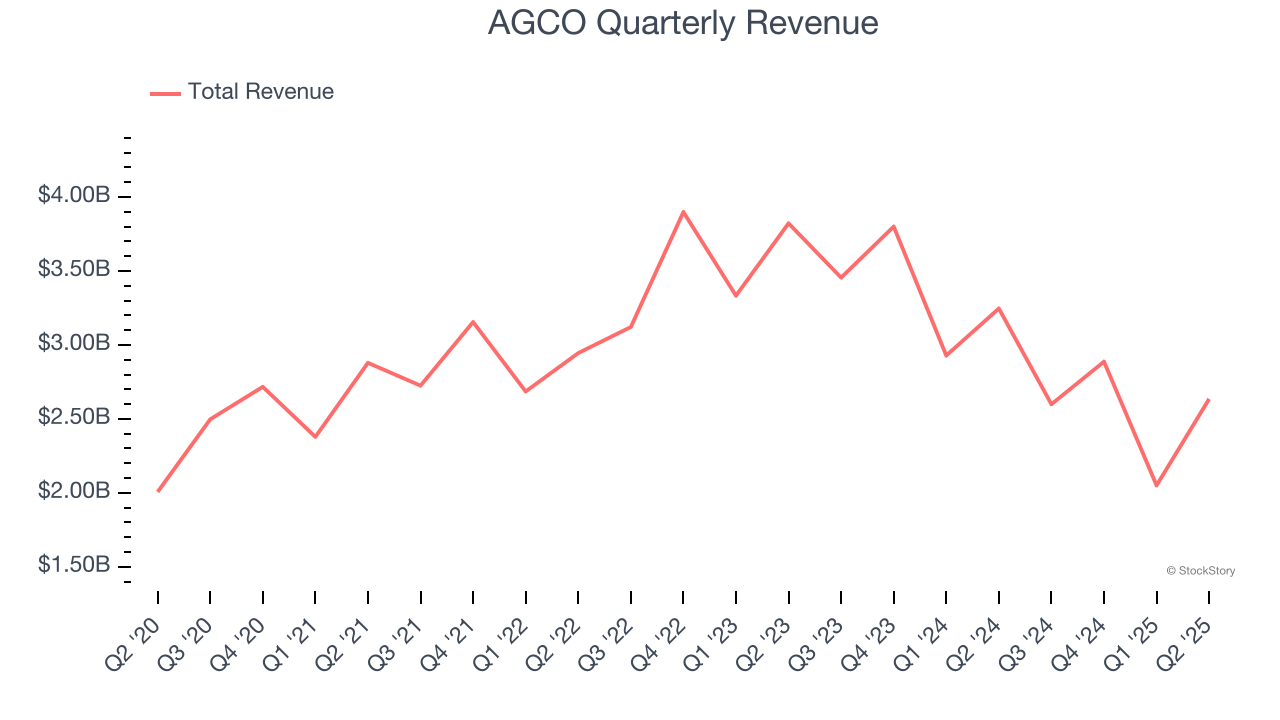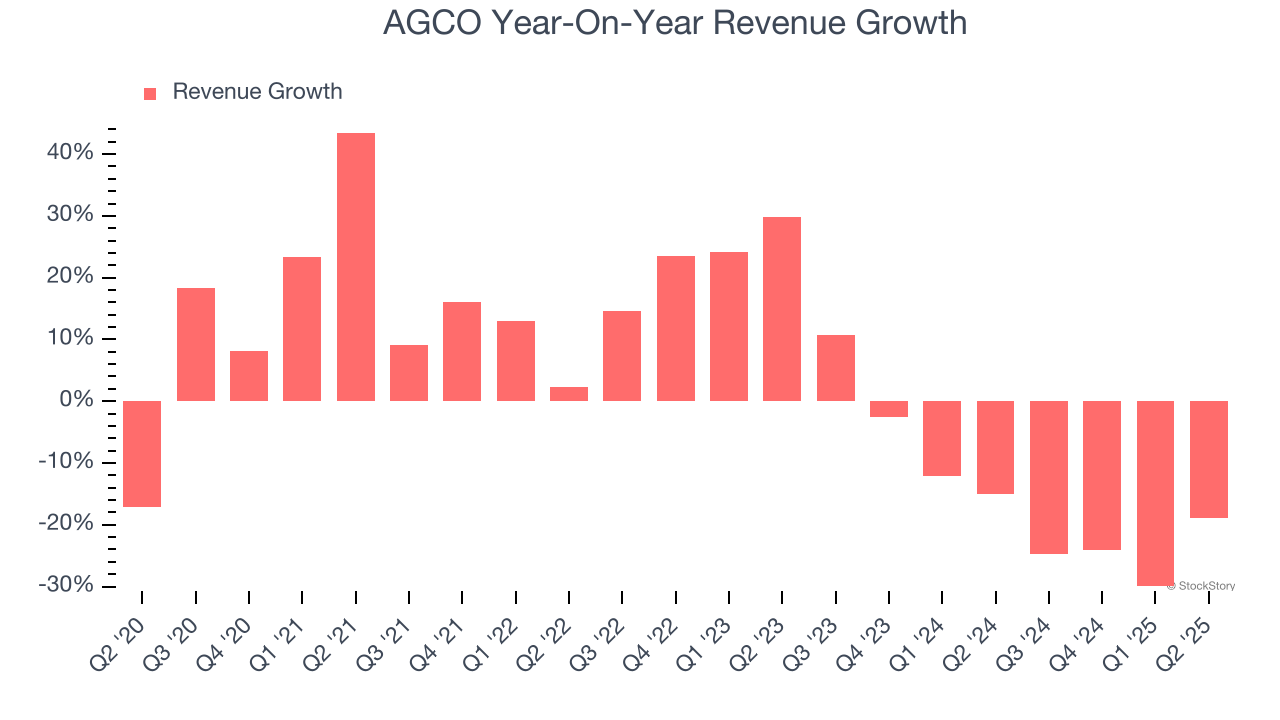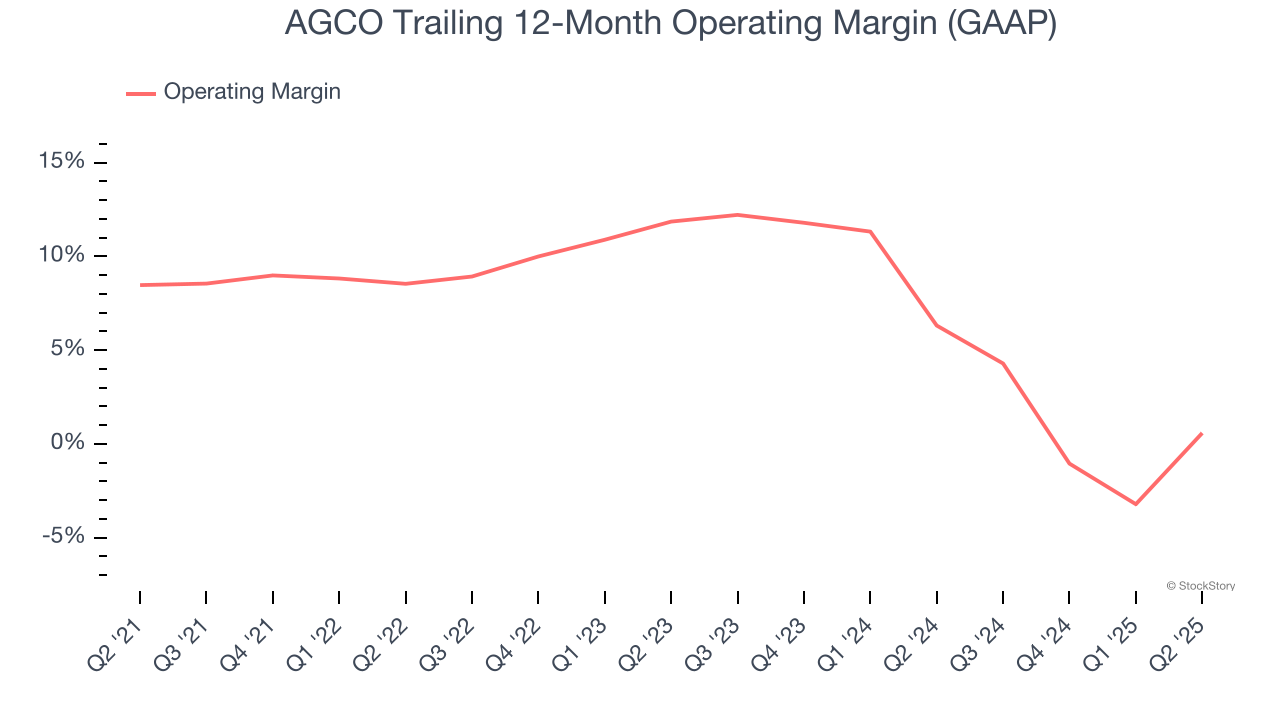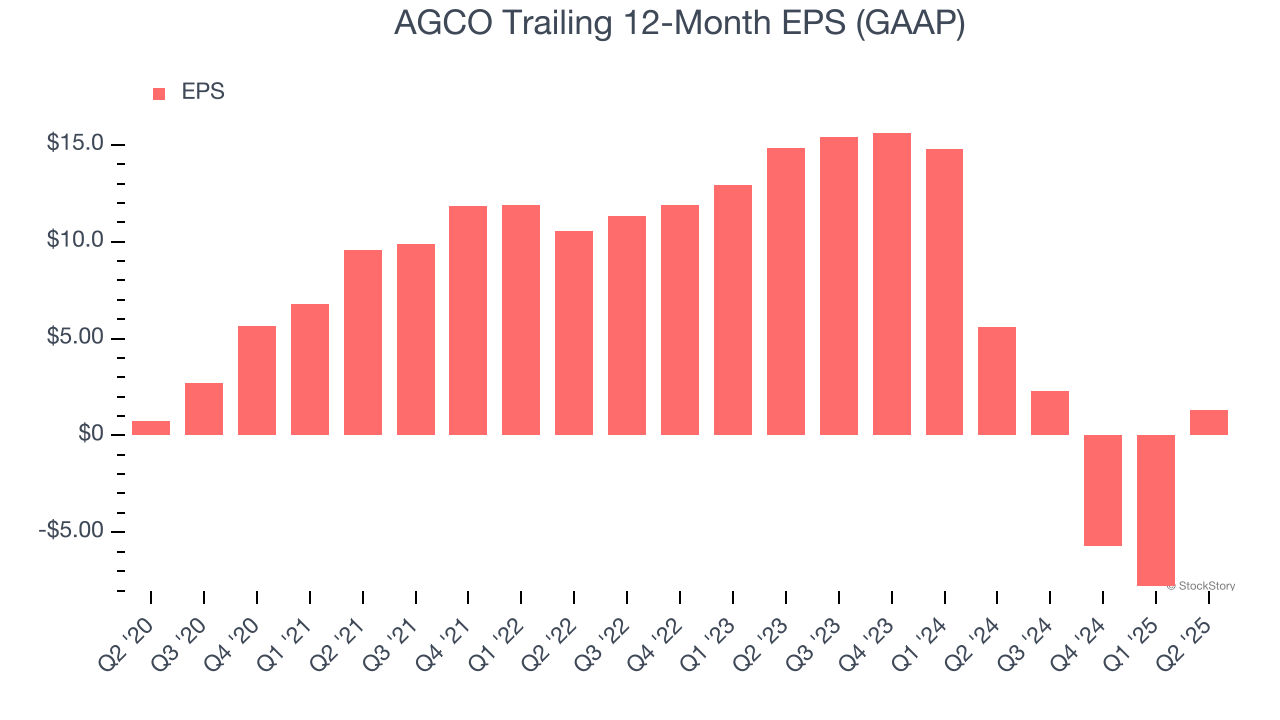
Agricultural and farm machinery company AGCO (NYSE: AGCO) reported Q2 CY2025 results exceeding the market’s revenue expectations, but sales fell by 18.8% year on year to $2.64 billion. The company’s full-year revenue guidance of $9.8 billion at the midpoint came in 1.7% above analysts’ estimates. Its GAAP profit of $4.22 per share was significantly above analysts’ consensus estimates.
Is now the time to buy AGCO? Find out by accessing our full research report, it’s free.
AGCO (AGCO) Q2 CY2025 Highlights:
- Revenue: $2.64 billion vs analyst estimates of $2.49 billion (18.8% year-on-year decline, 5.9% beat)
- EPS (GAAP): $4.22 vs analyst estimates of $0.94 (significant beat)
- The company lifted its revenue guidance for the full year to $9.8 billion at the midpoint from $9.6 billion, a 2.1% increase
- EPS (GAAP) guidance for the full year is $4.88 at the midpoint, beating analyst estimates by 26.4%
- Operating Margin: 6.2%, up from -7.4% in the same quarter last year
- Free Cash Flow Margin: 12.3%, up from 4.2% in the same quarter last year
- Market Capitalization: $7.96 billion
Company Overview
With a history that features both organic growth and acquisitions, AGCO (NYSE: AGCO) designs, manufactures, and sells agricultural machinery and related technology.
Revenue Growth
Reviewing a company’s long-term sales performance reveals insights into its quality. Any business can experience short-term success, but top-performing ones enjoy sustained growth for years. Unfortunately, AGCO’s 3.5% annualized revenue growth over the last five years was sluggish. This fell short of our benchmark for the industrials sector and is a tough starting point for our analysis.

Long-term growth is the most important, but within industrials, a half-decade historical view may miss new industry trends or demand cycles. AGCO’s performance shows it grew in the past but relinquished its gains over the last two years, as its revenue fell by 15.3% annually. AGCO isn’t alone in its struggles as the Agricultural Machinery industry experienced a cyclical downturn, with many similar businesses observing lower sales at this time. 
This quarter, AGCO’s revenue fell by 18.8% year on year to $2.64 billion but beat Wall Street’s estimates by 5.9%.
Looking ahead, sell-side analysts expect revenue to decline by 3.4% over the next 12 months. Although this projection is better than its two-year trend, it’s hard to get excited about a company that is struggling with demand.
Here at StockStory, we certainly understand the potential of thematic investing. Diverse winners from Microsoft (MSFT) to Alphabet (GOOG), Coca-Cola (KO) to Monster Beverage (MNST) could all have been identified as promising growth stories with a megatrend driving the growth. So, in that spirit, we’ve identified a relatively under-the-radar profitable growth stock benefiting from the rise of AI, available to you FREE via this link.
Operating Margin
AGCO was profitable over the last five years but held back by its large cost base. Its average operating margin of 7.5% was weak for an industrials business. This result isn’t too surprising given its low gross margin as a starting point.
Looking at the trend in its profitability, AGCO’s operating margin decreased by 7.9 percentage points over the last five years. This raises questions about the company’s expense base because its revenue growth should have given it leverage on its fixed costs, resulting in better economies of scale and profitability. AGCO’s performance was poor no matter how you look at it - it shows that costs were rising and it couldn’t pass them onto its customers.

In Q2, AGCO generated an operating margin profit margin of 6.2%, up 13.7 percentage points year on year. The increase was solid, and because its operating margin rose more than its gross margin, we can infer it was more efficient with expenses such as marketing, R&D, and administrative overhead.
Earnings Per Share
Revenue trends explain a company’s historical growth, but the long-term change in earnings per share (EPS) points to the profitability of that growth – for example, a company could inflate its sales through excessive spending on advertising and promotions.
AGCO’s EPS grew at a remarkable 12.9% compounded annual growth rate over the last five years, higher than its 3.5% annualized revenue growth. This tells us the company became more profitable on a per-share basis as it expanded.

Like with revenue, we analyze EPS over a shorter period to see if we are missing a change in the business.
For AGCO, its two-year annual EPS declines of 70% mark a reversal from its (seemingly) healthy five-year trend. We hope AGCO can return to earnings growth in the future.
In Q2, AGCO reported EPS at $4.22, up from negative $4.91 in the same quarter last year. This print easily cleared analysts’ estimates, and shareholders should be content with the results. Over the next 12 months, Wall Street expects AGCO’s full-year EPS of $1.33 to grow 276%.
Key Takeaways from AGCO’s Q2 Results
We were impressed by how significantly AGCO blew past analysts’ revenue and EPS expectations this quarter. We were also excited it raised its full-year guidance for both metrics. Zooming out, we think this was a good print with some key areas of upside. The stock traded up 7.9% to $115 immediately after reporting.
Indeed, AGCO had a rock-solid quarterly earnings result, but is this stock a good investment here? When making that decision, it’s important to consider its valuation, business qualities, as well as what has happened in the latest quarter. We cover that in our actionable full research report which you can read here, it’s free.




